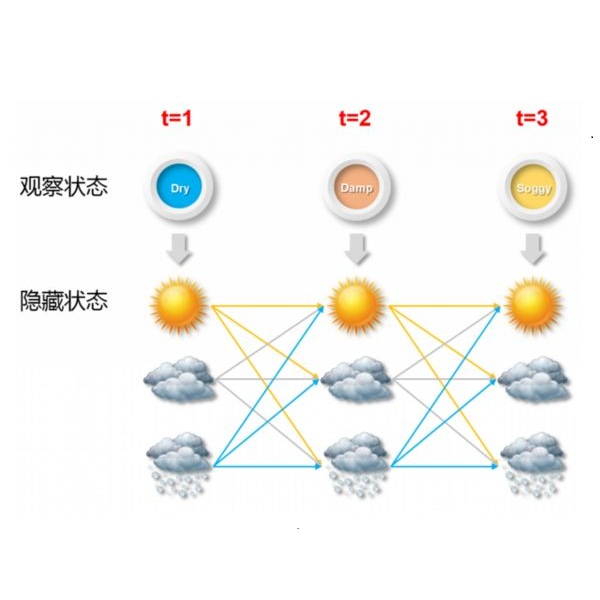In medicine, comorbidities refer to the presence of multiple, co-occurring diseases. Due to their co-occurring nature, the course of one comorbidity is often highly dependent on the course of the other disease and, hence, treatments can have significant spill-over effects. Despite the prevalence of comorbidities among patients, a comprehensive statistical framework for modeling the longitudinal dynamics of comorbidities is missing. In this paper, we propose a probabilistic model for analyzing comorbidity dynamics over time in patients. Specifically, we develop a coupled hidden Markov model with a personalized, non-homogeneous transition mechanism, named Comorbidity-HMM. The specification of our Comorbidity-HMM is informed by clinical research: (1) It accounts for different disease states (i. e., acute, stable) in the disease progression by introducing latent states that are of clinical meaning. (2) It models a coupling among the trajectories from comorbidities to capture co-evolution dynamics. (3) It considers between-patient heterogeneity (e. g., risk factors, treatments) in the transition mechanism. Based on our model, we define a spill-over effect that measures the indirect effect of treatments on patient trajectories through coupling (i. e., through comorbidity co-evolution). We evaluated our proposed Comorbidity-HMM based on 675 health trajectories where we investigate the joint progression of diabetes mellitus and chronic liver disease. Compared to alternative models without coupling, we find that our Comorbidity-HMM achieves a superior fit. Further, we quantify the spill-over effect, that is, to what extent diabetes treatments are associated with a change in the chronic liver disease from an acute to a stable disease state. To this end, our model is of direct relevance for both treatment planning and clinical research in the context of comorbidities.
翻译:医学中, 发病是指存在多种同时发生的疾病。 由于其共生性, 一种发病过程往往高度依赖于其他疾病的发病过程, 因此, 治疗会产生显著的溢出效应。 尽管患者的发病流行, 缺乏一个综合统计框架, 用于模拟发病的纵向动态。 在本文中, 我们提出一个概率模型, 用于分析患者长期的发病情况。 具体地说, 我们开发了一个隐藏的马可夫模型, 配有个性化的、 非血源性性性性肝脏疾病过渡机制。 我们的发病情况, 临床研究显示的是: (1) 不同疾病状态( 即, 急性, 稳定 ) 的发病模式, 引入具有临床意义的潜伏状态。 ( ) 我们的发病情况是从易变的发病情况到共发病情况。 ( ) 我们的发病情况从变变变变情况到共发性反应的变变变情况, 3) 它考虑我们之间 的发病情况, 变变变情况, 我们的变变变变变变情况, 我们的变变变情况, 我们的变变变变的机机制,, 我们的变变变的机 的变机制, 我们的变的变的机, 我们的变机, 我们的变变变变的变变变的变的变变的变变变 的变机, 我们的变的变, 我们的变的变的变机制, 我们的变机制, 我们的变的变的变的变的变, 我们的变的变的变的变的变的变的变的变, 的变变变的变的变的变机制, 我们的变的变 的变的变的变的变, 我们的变, 我们的变的变的变的变的变 的变的变的变, 我们的变, 我们的变, 我们的变, 我们的变的变, 我们的变, 我们的变的变的变的变的变的变, 我们的变, 我们的变, 我们的变的变, 我们的变的变, 我们的变的变的变的变的变的变的变的变的变的变变变的变的变的变的变的变的变的变的变的变





